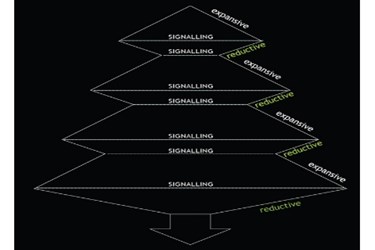The 2 Biggest Secrets Of Innovation

By Rob Wright, Chief Editor, Life Science Leader
Follow Me On Twitter @RfwrightLSL

By Rob Wright
At this year’s 2nd Annual Disruptive Innovation to Advance Clinical Trials for Pharma, Biologics & Devices conference in Boston, I had the opportunity to sit through a presentation by Jon Platt, healthcare sector leader for ?WhatIf! Innovation. Platt promised to reveal not only biggest secret to innovation, but also, the second biggest secret as well. In case you are thinking, what is the story with this weirdly spelled innovation company? Who is Jon Platt? Allow me to let you in on a little secret: some of their clients include a number of companies on Fast Company’s list of The World’s 50 Most Innovative Companies, such as #3 Google and #29 Red Bull.
In addition, seven of the top eight largest pharmaceutical companies in the world (Pfizer, Novartis, Sanofi, Roche, GSK, Astra Zeneca, and J&J) are clients, as well as two of the top four largest corporations in the world (Shell and BP) according to Fortune magazine’s 2012 Global 500 listing. Regarding Platt, prior to joining ?WhatIf! Innovation, he spent 20 years in advertising, an industry known for being very innovative. During his presentation, he engaged the audience in an interactive discussion on innovation’s two biggest secrets.The Biggest Secret Of InnovationTo understand the first secret of innovation, you need to first understand the difference between expansive and reductive behaviors/thinking, and the role of signaling. Expansive thinking, commonly referred to as “thinking outside of the box” or brainstorming, is where a problem is presented and people are encouraged to propose wildly crazy solutions. Platt notes that this process is usually conducted in “a box,” as in a conference room, complete with flip charts. We have all probably experienced the process of the boss closing the conference room door and saying, “Okay team, we are going to spend the next 30 minutes coming up with ideas.” The outcome of this approach is usually about as useful as the process itself. Here are seven tips for building ideas via expansive thinking.
- Create a relaxed environment.
- Use small groups – three to four people.
- Have a facilitator.
- Capture one idea at a time.
- Sit on your pen, as in be engaged in the process.
- Use pictures to capture ideas.
- Give it a catchy title.
Reductive thinking is the process of taking what was generated in the expansive process and reducing it down, simplifying. Platt used the analogy of handing you a seed. What is the easiest way to determine if it is a weed or a plant? You plant it and let it grow. Thus the term “greenhousing” is the process of allowing an idea to grow. When a new idea is proposed, it sometimes isn’t fully formed, and thus, can’t be determined if good or bad. So to create innovative problem solving, you need to utilize both expansive and reductive thinking, and most importantly, signal which type of behavior/thinking you are seeking. Thus, the biggest secret to innovation is — understand the power of expansive thinking, the role of reductive thinking, and use signaling to keep the team on course as to which phase you are in. Platt describes it as an innovation problem-solving Christmas Tree ( see figure 1 below). The second biggest secret to innovation will be revealed in my next blog. Stay tuned.
